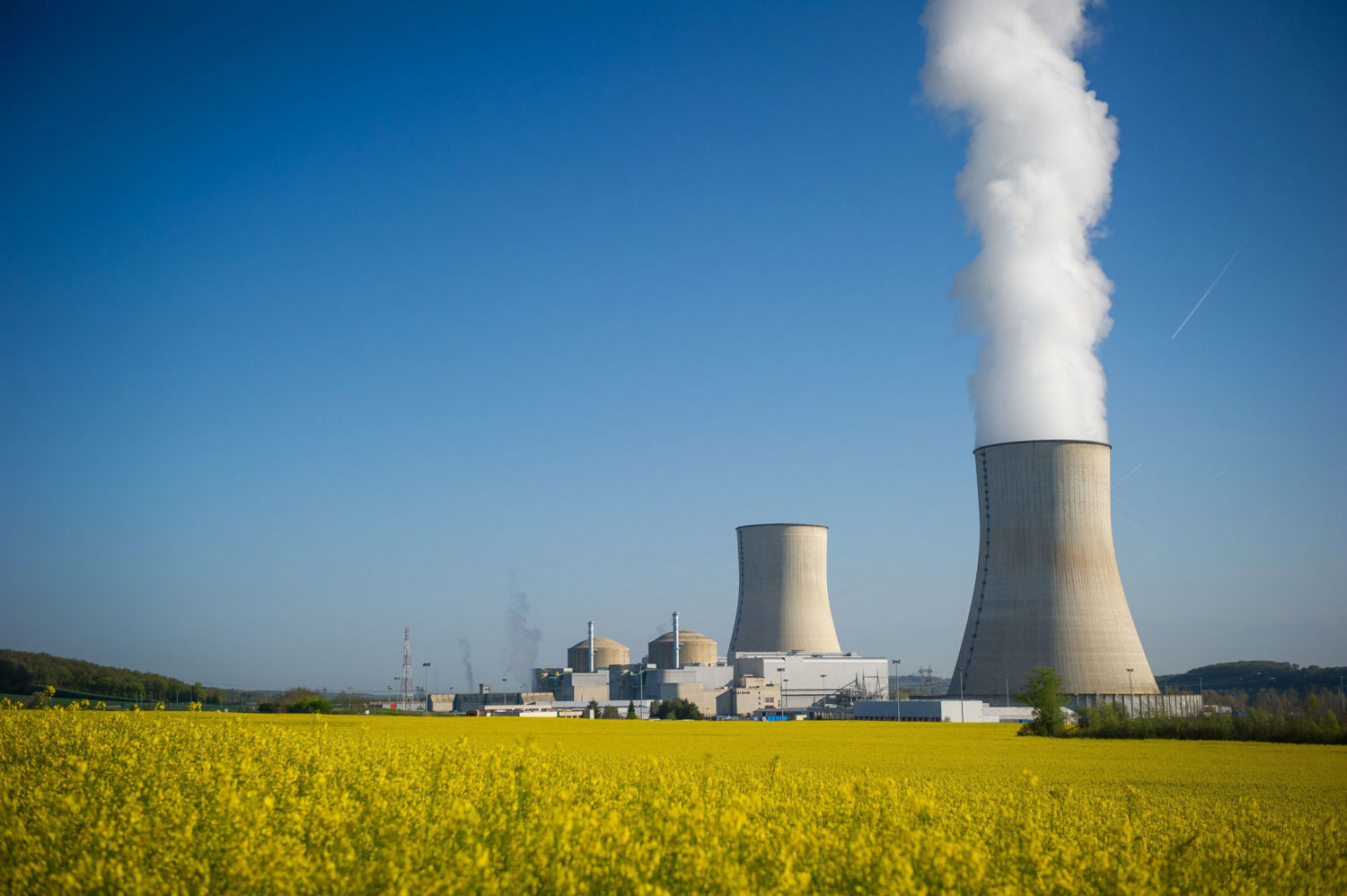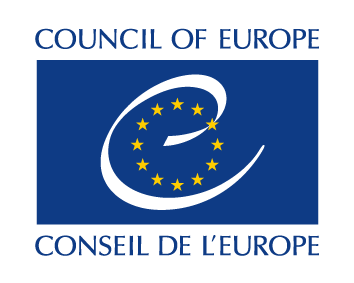Nuclear energy must be saved – Camille Ramecourt
 Why writing for an ecologist movement and talk about nuclear energy?
Why writing for an ecologist movement and talk about nuclear energy?
Don’t worry. First of all, I am quite sane, and I won’t be long. Secondly, since nuclear power doesn’t have very good press at home, I won’t ask you to be convinced either, but just to read. Listening to a divergent opinion is always beneficial, and agreeing on this point will enable us to agree, at least for the time of these few words.
I’m not an expert in nuclear power, not even in science. In fact, I’ve done everything I could to get away from it. So why would I want to write on a popularly unpleasant subject, in a field that makes me anxious, you may ask. Well, because it’s an emergency.
Not that I am the first neophyte to say it, but we know that learning is about repetition. So nuclear power not only deserves its chance, but has already proven itself.
Its CV is well known: it has the same carbon footprint -very low- as its wind turbine colleague while supplying electricity to millions of French households at half the cost, and guaranteeing national energy independence and employment for at least 140,000 people in France alone. (You will notice here that I am using Cécile Duflot’s 2011 figure and not that of PWC (410,000) or the CEO of ERDF (1 million)).

GUILLAUME SOUVANT / AFP / GETTY IMAGES
So why don’t we like nuclear power?
The first “cons” that comes to mind is the atomic bomb. At least that’s what I was thinking of when I heard “nuclear”. This is obviously a bias of thought, which does not immediately dissociate military nuclear and civil nuclear. The right limit of the subject is clear: civil nuclear power is based on and for the sole idea of providing electricity to everyone. I trust you to find the basis for military nuclear power.
Once this first association of ideas has been erased, there are still charges against Defense: at first there is the risks of the power stations, and then the problem of radioactive waste storage, which we will deal with in a second phase by talking about innovation.
We will start with the two most important power plant accidents: Chernobyl and Fukushima.
These two accidents are representative not of the danger of nuclear power per se, but of human flaws in the design or management of installations.
Chernobyl took place in the USSR in the 1980s. The lack of nuclear caution led to the explosion of the reactor, 62 victims, and much indirect damage.

Igor Kostin
Indeed, Valeri Legassov, the key man in the Soviet nuclear industry, from the development of the power plants to the management of Chernobyl, explains the crucial failings of the process. Between financial pressures, the assumption that employees were perfectly qualified, the plan governing the schedule, the absence of preventive work and, above all, the total lack of consideration for construction and emergency risks, the Chernobyl disaster constitutes the paroxysm of a failing nuclear development model.
“I am forced to go through the details, but Valeri Legassov’s testament “It was my duty to speak” is edifying and completely accessible, by and for everyone.”
A quarter of a century later, Fukushima points out two things to us. On the one hand that the majority of the human toll is attributable to the earthquake, the tsunami, and the displacement of populations. On the other hand, that the damage linked to the power plant is no longer the result of its design, but of crisis management after the accident. Indeed, the problem at the Fukushima Daiichi site was due to the unpredictability of the earthquake by the specialists as well as the lack of composure and organisation between the manufacturer, the Japanese nuclear safety agency and the local government.
And this shift of the real cause of the disaster from reactor design to crisis management reflects the changing situation of civil nuclear power, since the first plants were built in the 1950s.
Let me explain.
You may be surprised – or not – that in wanting to defend civil nuclear power, I begin by exposing its damage.
However, starting with Chernobyl underlines that one is aware of the risks, which is essential to counter them. Neither the designer nor the teams at Chernobyl were aware of the particularly imperative precautions to be taken with nuclear power. Legassov’s chilling statements on the behaviour of power plant workers and their qualifications bear witness to this. What has been drawn from Chernobyl is the awareness of the risks of nuclear power.
This awareness of risk has had a global impact, and such an impact that it took 25 years and an unpredictable natural disaster for a nuclear accident of the same magnitude to occur.
And yet, Fukushima Daiichi illustrates the considerable progress made possible thanks to the awareness of the nuclear sector.
Because it is the exception.
There were three other power plants on the same earthquake-prone coast as Fukushima Daiichi. None of them had the same management.
The influence of the operator is all the more obvious when we look at the two power stations not managed by TEPCO. The older plants (Tōkai) and those closer to the epicentre of the earthquake (Onagawa) withstood the earthquake and were automatically shut down. The Onagawa power station, having reported only one anomaly, even offered shelter to families whose homes had been destroyed by the tsunami!
Thus civil nuclear power is aware of it. It is becoming safer and safer all the time. Currently, in its Generation III+ reactors, most of them are equipped with passive safety devices, requiring no human intervention in case of emergency. Their generalisation is planned for the next generation, particularly in SMRs (Small Modular Reactors), some of which are already operational. Their majority will be all the more secure and safe, as they can be buried or submerged.

Tokai reactor. Picture: Kyodo
Thus, the last and main, if not exclusive, source of damage in nuclear accidents, human unpredictability, has already lost its place in our future power plants.
Moreover, if it would have been intolerable not to recognise the human failings at the origin of nuclear accidents, it would have been the same not to recognise the consequences of the absolute rejection of civil nuclear power.
Rejecting the blinkers is crucial, because if the desire to get out of nuclear power is often based on good intentions, it is a Trojan horse. Indeed, under the pretext of choosing cleaner energy, we have European neighbours who consider it more pressing to get out of nuclear than coal. Similarly on French soil, we give in to symbolic closures, assuring the population that the network will remain as efficient, whereas every time Paris sneezes, we declare a black day on the power lines. And this from Fessenheim.
Thus, the last and main, if not exclusive, source of damage in nuclear accidents, human unpredictability, has already lost its place in our future power plants.
Moreover, if it would have been intolerable not to recognise the human failings at the origin of nuclear accidents, it would have been the same not to recognise the consequences of the absolute rejection of civil nuclear power.
Rejecting the blinkers is crucial, because if the desire to get out of nuclear power is often based on good intentions, it is a Trojan horse. Indeed, under the pretext of choosing cleaner energy, we have European neighbours who consider it more pressing to get out of nuclear than coal. Similarly on French soil, we give in to symbolic closures, assuring the population that the network will remain as efficient, whereas every time Paris sneezes, we declare a black day on the power lines. And this from Fessenheim.
The Secretary of State for Ecological Transition herself points out that a coal-fired power station represents the CO2 emissions of 1 million – non-electric – cars per year.
But the emergency was Fessenheim.
To be fiercely for or against nuclear power is necessarily bad. A lack of critical thinking against one’s ideas is never praiseworthy.
Consciences are evolving and true knowledge of civil nuclear power and its faculties is rare, as Zion Lights testifies. The former spokesperson for Extinction Rebellion regrets the “nuclear denial” of her former movement.
Again, no details, but her interviews are also accessible and her point of view enlightening.
Of course every energy has its risks and limits, and to ignore them would be terrible and detrimental to innovation.
However, if we want to go too fast, we are faced with hypocritical contradictions like the one in Fessenheim. Ideas and theory are laudable, but often diverge from the goal once applied.
The best solution lies in a mix of energy sources. United in diversity and satisfying both the environment and safety. Stopping coal seems obvious at first. But it is a question of meeting growing energy needs in a conscious and future-oriented way.
Wanting to move to 100% renewable within the next 5 or 10 years makes no sense. We can see that Germany, at a time when it is over 40% renewable energy, is inaugurating a brand new coal-fired power station in 2020.
Nicolas Hulot realized these contradictions, who wanted the skin of nuclear power and preferred coal in the name of ecology. He acted sensibly when he preferred to revise downwards his objective of reducing the use of nuclear power in French energy, rather than keeping coal-fired power plants in operation and opening new gas plants that would have been necessary to make up for the shortfalls created.

Fessenheim. Picture: Reuters/V. Kessler
Europe’s future will not be forever or exclusively nuclear. But with good reason, this link will be necessary. In order to make a lasting advance in ecology, nuclear power is vital on European soil, to avoid the bumps of an unknown road that one would like to take too quickly.
Renewable energies are still a beginner’s field, and the lack of knowledge still limits us and makes us use them inefficiently. The questions of manufacturing and recycling of wind turbines and solar panels, the difficulties of storing new energies and their intermittency are so many limits that do not allow, for the moment, the transition to 100% renewable energy, which is desirable in the long term.
All the more so as European choices are playing against Europe, favouring the quantity of solar panels rather than the construction of Europe, which is nevertheless the cement of the continent. Decreasing the share of photovoltaic modules produced in Europe from 30% in 2007 to 3% in 2017 on the world market, having authorised Chinese dumping, is no longer a contradiction, but a murder.
However, the considerable progress made by Europe in this area bodes well for the future, and a reasoned energy mix between nuclear and renewable energies is the best solution for the transition. The share of renewables is increasing in line with innovation, gradually replacing the share of nuclear fission. Progressivity is the key to avoiding a new environmental disaster on our hands.
This solution being possible on the one hand, thanks to the thousand precautions which are the line of conduct of current nuclear power, and on the other hand thanks to innovation.
This solution being possible on the one hand, thanks to the thousand precautions which are the line of conduct of current nuclear power, and on the other hand thanks to innovation.
Nuclear power also has its innovation. The fourth generation of reactors is within reach, with the first industrial demonstrator project already underway. The fast neutron reactors (RNR) will first be more efficient: with the same initial quantity of uranium, 100 times more electricity will be produced than in current reactors. Moreover, RNRs have been designed to improve waste management. Their capacity to burn a significant proportion of the radioactive elements resulting from combustion induces two things. The reduction of waste (multi-recycling) and its radiotoxicity of the order of several hundred thousand years (transmutation).
Alongside GEN IV, nuclear research is also focusing on fusion. And fusion is even closer than it is within reach, with several fusion reactors already operating around the world.
Nuclear fusion initially produces 10 times more energy than the current fission phenomenon. On the other hand, reproducing the reaction that powers the Sun and stars is an almost inexhaustible source of energy. And last but not least: fusion does not produce nuclear waste!
Thus, we can move with the greatest serenity towards renewable energies, first of all supported by an energy mix that eliminates coal and gas, without having recourse to the resources of other countries, which are less environmentally friendly than Europe.
The European agreement was based on industry, and on European industry. On sharing and on the desire for progress. Today’s nuclear power is not an end to the European energy problem, but the means to achieve the cleanest possible energy. In order to achieve this goal, it is necessary to accept to see the situation as a whole, and to lean towards reason, rather than emotion. Acting out of emotion would first lead us to a loss of credibility on the world stage, not knowing how to accept the real consequences of our theoretical desires, and to energy and environmental inefficiency.
Reason, for a nuclear energy that supports renewable energies, against any coal or oil alternative. And also, and above all, for European projects, because it is on this scale that advances in the field will have a real impact. Developing a European energy spirit is crucial, but everyone must agree to think together, and on the long term.
By Camille Ramecourt (France)
Finance student in the Paris Dauphine University, Camille is convinced that this channel is essential in order to conduct global reforms in terms of society’s consumption pattern and production methods. Attracted for a long time to Russia and its culture, she wanted to get involved as of now in the rethink of the climatic thought by joining the Franco-Russian dialogue.


 YEE aims to unite environmental youth non-profit organisations in Europe in order to enhance international cooperation, increase knowledge about the climate crisis, raise awareness of environmental problems and to strengthen participation of youth in environmental decision-making.
YEE aims to unite environmental youth non-profit organisations in Europe in order to enhance international cooperation, increase knowledge about the climate crisis, raise awareness of environmental problems and to strengthen participation of youth in environmental decision-making.





Leave a Reply
Want to join the discussion?Feel free to contribute!